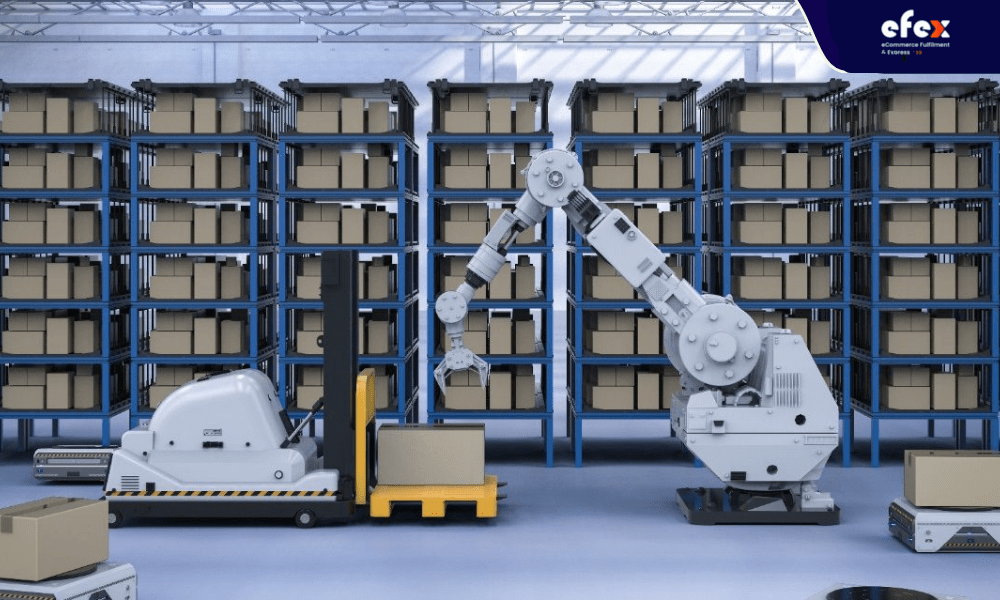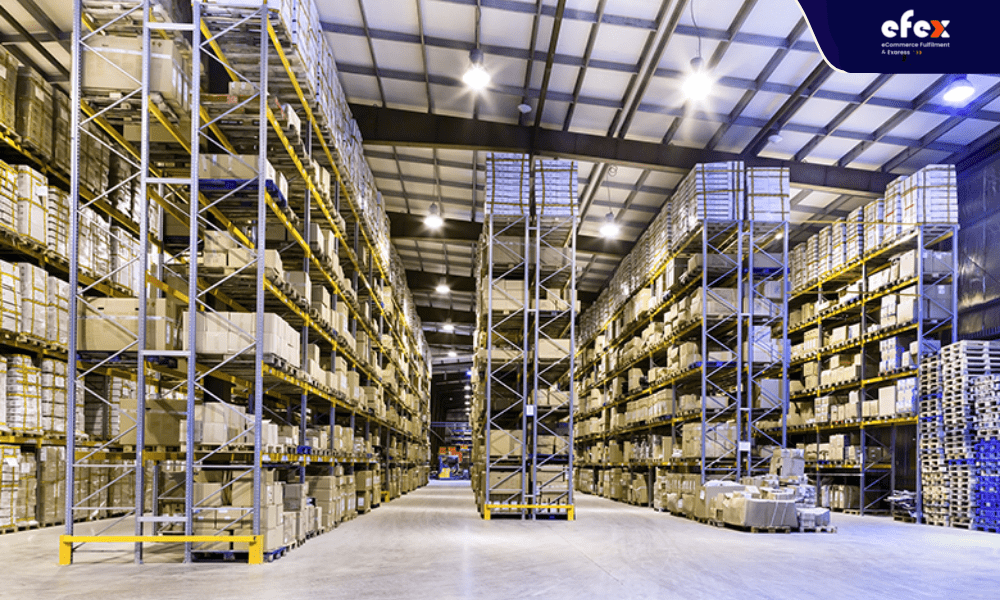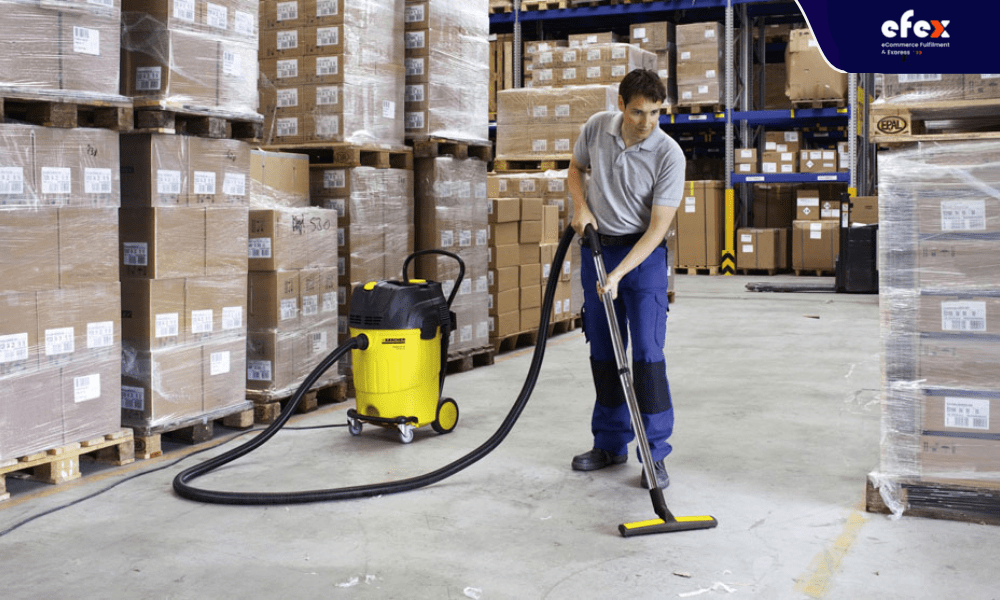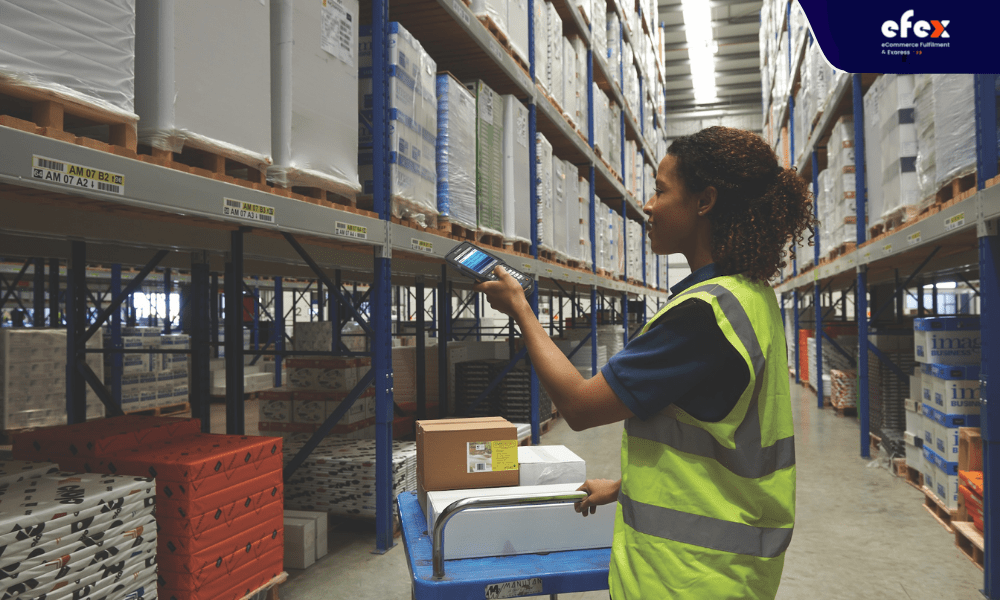
More Helpful Content
For those starting out running a warehouse, the knowledge base you build will affect how well your business will perform in the future. When you understand how to optimize warehouse space, you will design highly efficient storage and packaging space. At the same time, it helps employees save time and increase labor productivity. This post will give you 14 warehouse optimization suggestions to help you improve your work.
Regardless of the size of your warehouse, warehouse optimization is critical to your company's success. It's about using the space, equipment, and resources available effectively to keep your warehouse working smoothly. Thereby reducing mistakes and improving flexibility, staff management, and increased customer satisfaction. To do that, you can apply a number of ways such as detailed and reasonable planning; work process automation.
Product velocity is defined as the rate at which that type of item is sold over a given period of time. In an inventory, there will be items that sell faster than others, whether during special sales or seasonal products. Therefore, such items should be prioritized to be placed somewhere that can be easily received and packed in the warehouse.
You should put them on the shelves close to the parking area instead of on the upper shelves. This will save staff time when picking up items and speed up warehouse operations.
👉 Read More: All Cost To Rent A Warehouse In 2023
No matter how well-trained your employees are, there will still be some unnecessary errors in the process of working. The best way to minimize this is to mark all products, shelves, aisles, and transportation equipment in your warehouse. You should invest some money in this because it will help your employees easily recognize the product from a distance. From there, employees will make fewer mistakes and at the same time improve work progress.
In a warehouse, employees have to take on many different tasks such as receiving products, packing, labeling, and shipping... Therefore, instead of optimizing each activity one by one, you should use inventory management technologies that integrate all-in-one management.

Warehouse management software (WMS) and inventory management systems (IMS) are two software that is used by many business owners. This connection enables all duties to be managed from a single platform. WMS enables managers to watch inventory levels and how merchandise travels out of the warehouse, assisting in the avoidance of excessive costs and inventory management difficulties.
During order fulfillment, it is important to ensure that goods are packed and transported to the correct receiving area for delivery. However, if this is done manually, it will be time-consuming and confusing. That's why you should integrate order routing automation that can make the process work quickly and smoothly.
Warehouses that invest in automation systems will see immediate practical benefits in terms of cost savings and increased productivity. A few decades ago, warehouse technology was confined to a robot arm that could handle or carry large things when guided by humans. Technology can now handle a wider range of duties.

Here are a few examples of machines that are widely seen in warehouses today:
These are some of the most recent innovations employed in warehouses. Some of the benefits of this transformation include increased customer happiness, fewer errors in delivery, and a reputation as an innovative company that may attract customers.
You should maintain OSHA (Occupational Health and Safety Administration) standards in your warehouse. It will ensure the safety of your employees as well as yourself. Ensuring the safety of your employees during work is an important part of warehouse management. In the process of working, it is inevitable that accidents will occur. To minimize that, make sure the aisles of employees and transporting machinery are clear and clean.
Research shows that about 40% of deaths while working in warehouses are due to falls. Preventing this problem can be completely avoided with methods such as: installing non-slip mats, cleaning floors to ensure they are always dry, training staff to safely drive forklifts, and so on.
Having a clean workspace also contributes to employee safety. However, as a business owner, you should delegate the responsibility of warehouse cleaning to supervisors or employees. You should provide cleaning tools such as brooms, mops, vacuum cleaners, and trash cans and ask staff to have a sense of general hygiene. Besides, you can give regulations or penalties to ensure the best warehouse cleaning.

A well-lit warehouse for employees should also be something you need to keep in mind. Employees who work in warehouses with insufficient lighting will be susceptible to unnecessary situations such as picking or misclassifying goods. Bright lights will give employees the most convenient look and also create a sense of security.
Make a daily checklist to visually check your inventory on a daily basis. Ideally, your warehouse should ensure the following criteria: Neat, clean, neat, and so on. This is very effective because your inventory will always be checked for important factors and you also don't waste time keeping things in your head.
The OSHA Pocket Guide will provide you with all the information you need to know about safety in the warehouse. You will understand the importance of safe handling methods, materials and forklift driving, and much more. Employees in the warehouse must also be instructed and follow these principles to ensure job safety. You should ask them to learn while they are still new employees.
A messy warehouse will greatly affect the quality of work for you and your employees. Jobs such as picking and packing will be delayed because the warehouse is not arranged in an orderly manner. At the same time, it also demonstrates your incomplete leadership, customers will hardly be satisfied when working with a messy warehouse. Your warehouse is the central area of your business. You will not be able to make the most of available resources and often waste the potential of your business if the warehouse is not properly arranged.

Therefore, organizing your warehouse efficiently is something that a business owner like you should care about. This is not really simple, you should consult employees, and open meetings for everyone to come up with ideas together. Employees are people who directly operate in the warehouse. So they will clearly understand the unreasonable points in your warehouse.
You can start with something simple at first: clear up any clutter that's blocking the employee or forklift access. Next, take an inventory of what items or equipment you have in your inventory.
From there, calculate which additional equipment should be purchased to optimize the warehouse space. You don't have to shut down all of your production to get your warehouse organized. Just let it run its course and in the meantime look for problems that need to be solved.
Do you want to optimize warehouse space but don't know which way is most suitable? Try the ways below
This covers not just the actual, top-down measurements of the workspace, but also the particular dimensions of the shelf space, including any storage space alternatives.
One of the most significant advantages of completing an ABC analysis (as described here) is that it shows your most valued things. These are the things that should be positioned closest to your processing and shipping areas.
If standard racking solutions aren't what's ideal for your company, don't use them. Check out this resource for an overview of the most prevalent storage systems and their applications.
Proper aisle labeling is a vital element of OSHA compliance as your warehouse expands. Your marking system does not have to be complex. You only need a basic number or alphabetic system to indicate aisles and shelves. This is advantageous not just for safety, but also for picking and packaging efficiency.
You're losing time if your process station is too far away from your tag printer, or if it's on the other side of your most valuable items. As previously stated, the inventory period is recorded in seconds rather than minutes. You will ship things faster and more precisely if you can remove "moving waste" inefficiencies. These practices foretell a great client experience, which is the true secret to success in any eCommerce firm.
The most important thing that warehouse managers must overcome is to ensure that the inventory is not too much (causes a lot of inventory) and the amount of inventory is low, unable to meet market demand. To avoid these difficulties, the best way is to correctly forecast market trends and understand the supply chain.
SkuVault and WMS (warehouse management system) can help you do just that. These are software that is integrated with the most modern features so that managers can analyze data and make better decisions in the future.
Ensuring that the goods arrive at the right place and at the right time is the responsibility of a manager like you. You must ensure that the shipping and receiving of the goods go as smoothly as possible. This task is difficult because it requires a large number of your resources, time, and intelligence.
Through that, your entire warehouse operation must be streamlined for optimal efficiency, from receiving goods to packaging and shipping. As soon as the product arrives at the receiving area, you should consider streamlining your warehouse operations. When a product order arrives, it becomes part of your inventory.
When items arrive, they are checked for damage, incorrect selection, and quantity. You should give employees enough space to remove inventory from pallets or do other tasks.
Normally, staff when checking transported goods will check whether the commodities have been delivered to the right place, in sufficient quantity or not. This method is often used by many warehouses when inspecting goods because of the low cost, but it carries a greater risk of errors.
One day, your staff was careless and checked the wrong goods, the goods were not enough but still reported ok. Or there are some customers who require you to check the item carefully and that will take more of your time and manpower.
So how to fix that? The most effective solution is to use automated warehouse management software. Automation helps to limit manual testing errors. Instead of visually cross-referencing invoices with products, automation methods use scanners to run comparisons by scanning product barcodes while unloading.
Picking and packing are two important factors in the logistics industry. They are two separate but closely linked elements. First, let's learn how to pick. Picking goods is always one of the most important and most concerning processes for business owners. Because the correct and effective selection will account for 75% of the success of the business.

As a result, that company's reputation will be damaged if they choose the wrong product. Besides, you're both wasting time and money picking and shipping that product and spending more time editing the selection to get the right item. Or check out these tips to optimize your process and reduce unwanted risk:
Carefully study the market needs and buying habits of buyers. From there, make a decision to choose the right product according to the needs of the customer. If your customers regularly buy the same items, then you should prioritize these items (in just enough quantity to meet their needs).
The application of technology in business is also something to keep in mind, you should statistics how often your customers buy and sell and what types of items they tend to buy the most. Next, let's discuss packaging. The most important thing in packaging is that it is fast and accurate. It sounds obvious and simple, but you can only achieve this if you have a method that works.
Because otherwise, it is entirely possible for employees to have to pack hundreds of orders a day. It is recommended that you arrange a packing site close to the shipping location. Even the way the product is packaged contributes to the overall efficiency of the warehouse. Use two or three standard packaging methods, appropriate to the nature of your goods.
This way also helps to reduce freight costs and helps to transport welding to customers faster. Shipping software is also beneficial for increasing the efficiency of the packaging process. Shipping software can calculate the weight of the package or fill in the product name. They also often integrate with inventory management systems to make the process more seamless.
Shipping choices that are diverse allow your clients to get more items on time. If you are just utilizing one shipping service, do some research to discover what alternative shipping options are available to you. Shipping companies such as FedEx, freight on board (FOB), and Amazon are among the most popular options.
You should understand that the more delivery suppliers you have, the more choices you have if a problem happens. Assume it's the Christmas holidays and your warehouse has late orders that your customers want to be delivered as soon as feasible. You'll be out of stock if you only utilize one delivery service that won't accept to ship the merchandise.
As a result, if you cooperate with various shipping companies, your delivery volume will grow. Improving delivery efficiency can also help your business. However, the most important thing is that you always ship goods quickly and efficiently. When it comes to competition, the company that delivers faster is always better.
You should maintain a wide range of different shipping methods and stay up to date on developments in the shipping business. Additionally, track orders to verify that they are delivered efficiently and in line with your company's strategy.
The goal of data collection is to enable warehouse managers to understand what methods work well and where they need improvement. This data will also provide consumers with a consolidated breakdown of everything inside the warehouse. Managers can make accurate judgments about their goods and operations when they have access to real-time actionable data.
When used effectively, it can easily identify any flaws in the inventory that need improvement. With virtually limitless data collection options available, you shouldn't rely on manual data collection methods. These approaches result in higher error rates and adversely affect work progress. Instead, installing a barcode scanner technology in the warehouse would be a great idea. Most barcode scanners can be linked to a WMS.
They will collect important data about every procedure in the warehouse there. This information may include:
To see if you've optimized your warehouse space, apply this checklist:
Large businesses or those that cover a large geographical area will find that efficient warehouse operations are not enough to satisfy customers who expect prompt delivery.
In the warehouse management system, besides technology, people also contribute a significant part to the operation of the business. So, if you want to optimize the warehouse, changing the way employees work is also what you should do. However, it won't be easy when it comes to persuading your employees to give up old habits and switch to new ways of doing things and new technologies that may pose a risk to them. In order for change to develop smoothly, managers should try the following:
Warehouse optimization strategies are not something that can be done quickly. It might take months to change your warehousing operation.
👉 Read More: 15 Tips To Improve Warehouse Layout Fast And Effectively
👉 Read More: 20 Tips To Organize A Warehouse Efficiently And Productively
Optimizing warehouse space will be an important factor in the success or failure of a business. Similar to other business models, warehouses must always be renewed and updated to meet the needs of the market. Warehouse optimization will take a lot of time and effort to implement. So hopefully this article has helped you shorten that journey somehow.


